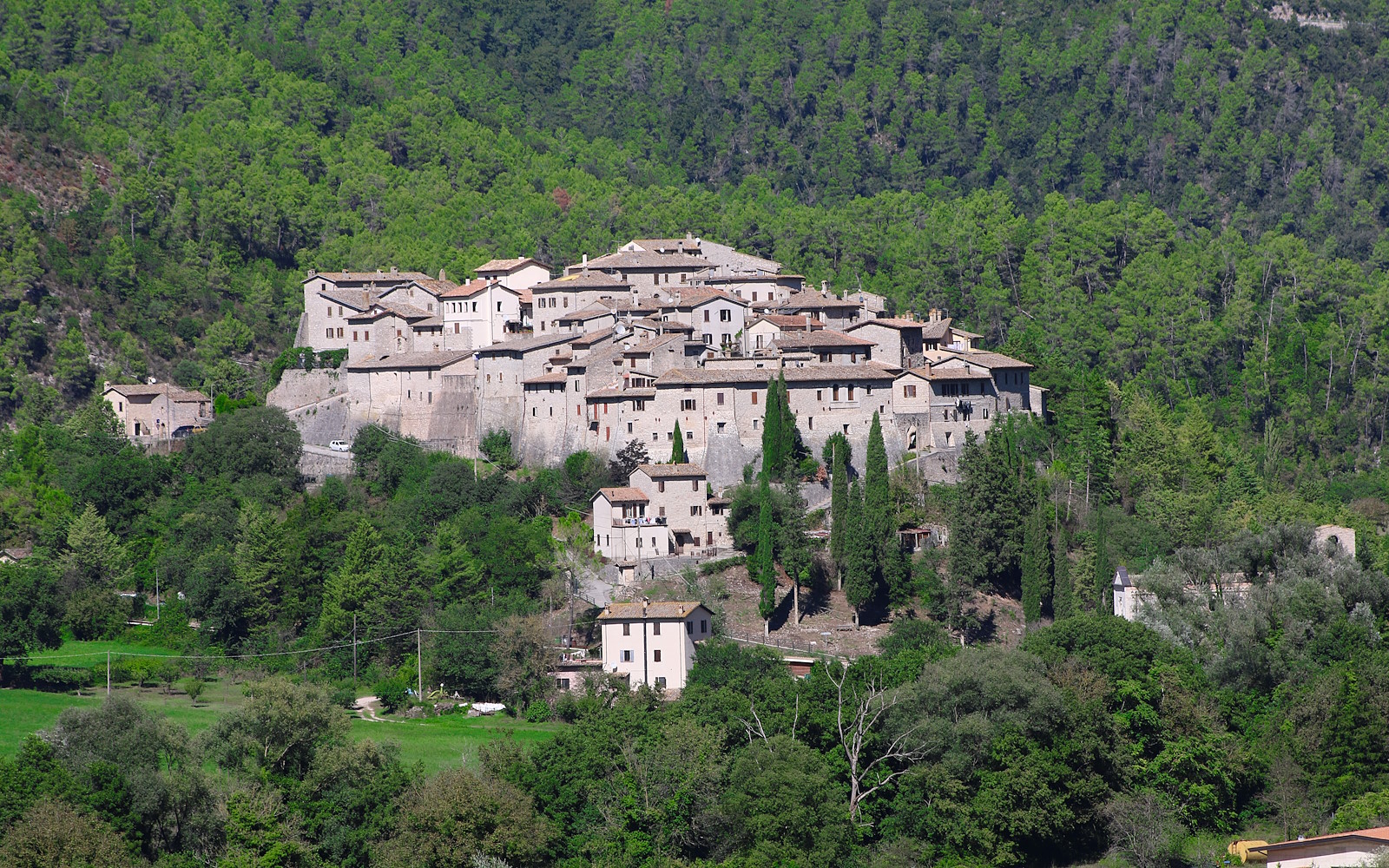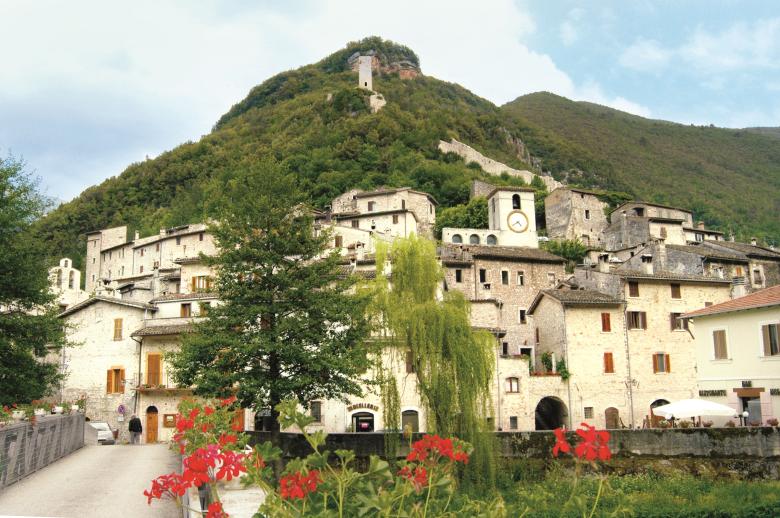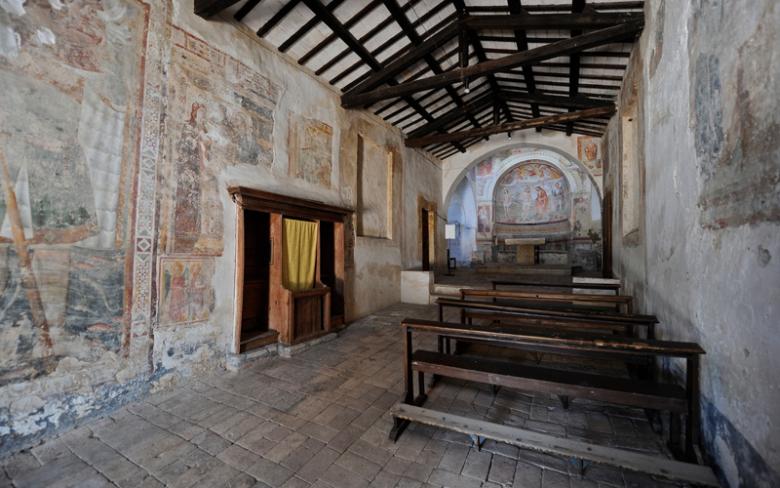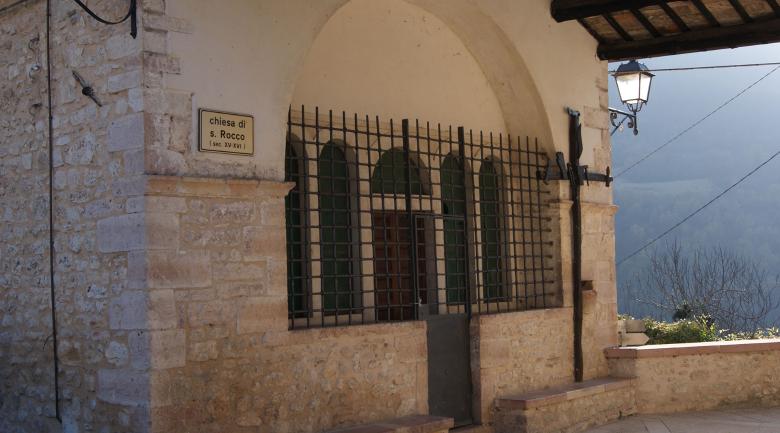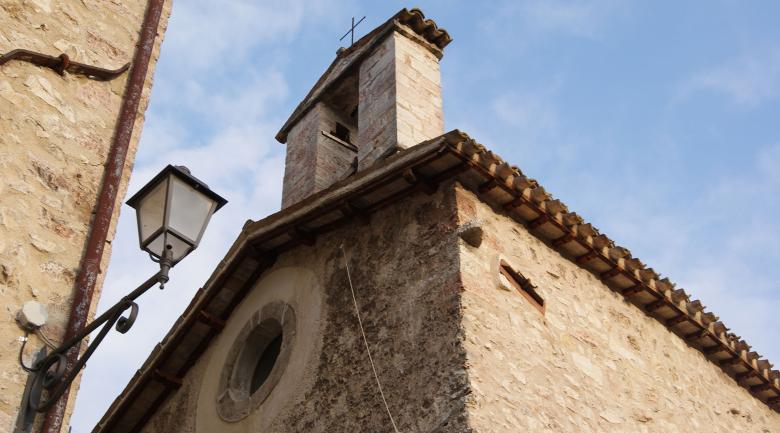Castel San Felice
Castel San Felice is a hamlet of the municipality of Sant’Anatolia di Narco located on the top of a hill near the Nera River. This small town, which still retains its original building conformation as a fortified centre, owes its name to the figure of Saint Felice, a Syrian monk who in the 6th century, together with his father Mauro, chose to retire to a contemplative life in a cave near the river.
In the centuries that followed, the growing veneration for the two hermits and their miraculous feats, such as the legendary slaying of the dragon that haunted the area, led to the birth of a small cenobitic community and a small settlement.
At the end of the 12th century, the Abbey of Saints Felice and Mauro was built on the site where the hermit community had sprung up, while the nucleus of habitation gathered on the hill above, giving rise to the fortified castle.
Today it is still possible to admire the original building layout, characterised by narrow alleys connected by steep stairways. Inside the castle is the Church of St Sebastian, located near the eastern entrance gate. From the western gate, on the other hand, there is a splendid view of the abbey below and the recently restored bridge over the Nera River. From this point begins the “La Pia” path, so called for the local name given to the small church of Santa Maria di Narco, located along the approximately 1.5 km-long route to Sant’Anatolia di Narco.
In past centuries, Castel San Felice represented a point of passage between the routes connecting the municipalities of Sant’Anatolia di Narco and Vallo di Nera, a role maintained even in more recent times, as evidenced by the presence of one of the tollbooths of the historic Spoleto-Norcia railway, now converted into a cycle-pedestrian route. Near the tollgate also begins the road that, crossing other hamlets in the municipality such as Grotti and Tassinare, was the main link between the Valnerina and Spoleto before the opening of the Forca di Cerro Tunnel.
























